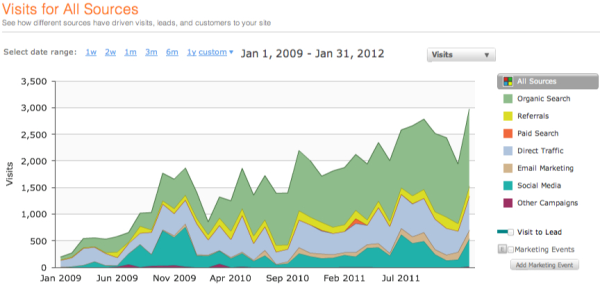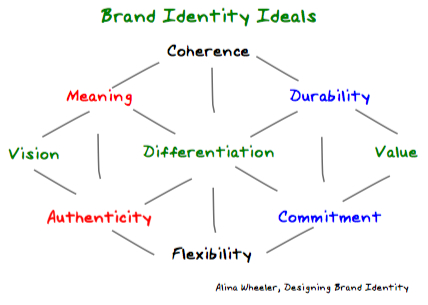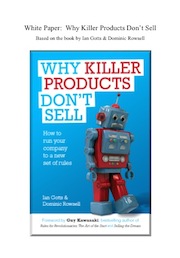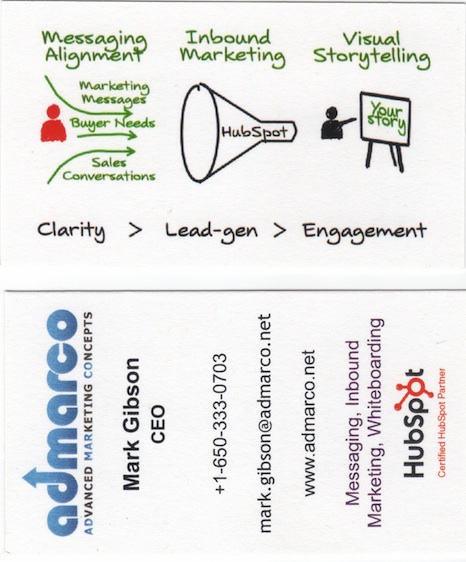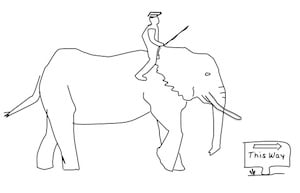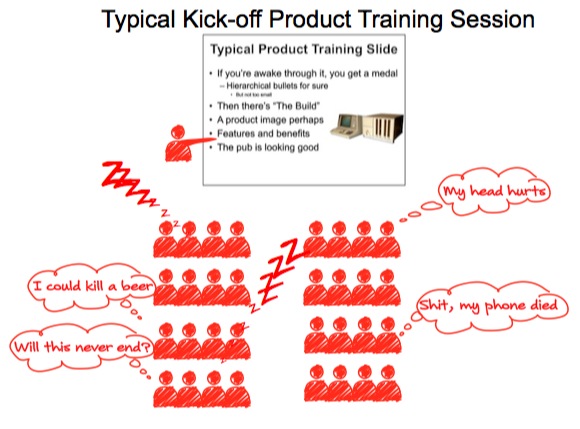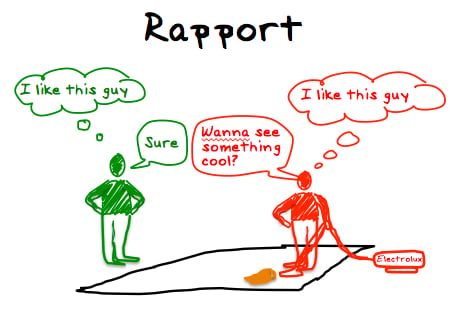This HubSpot Review marks our third anniversary as a user of the HubSpot system for Inbound Marketing.
We had a record year last year, which we attribute to increasing inbound traffic more than 50% and doubling our average visit lead conversion rate. Our ROI on HubSpot license fees last year in terms of revenue directly attributable to our inbound marketing activity is more than 60:1
Mark Gibson
Recent posts by Mark Gibson
2 min read
Hubspot Review - Year 3 a 250% increase in leads, ROI of > 60:1
By Mark Gibson on Dec 1, 2012 12:00:00 AM
Topics: inbound marketing hubspot hubspot review
4 min read
Brand Value Proposition and your Logo - Nobody Cares except you!
By Mark Gibson on Oct 7, 2012 12:00:00 AM
What's in a Brand?
- What's in your Brand?
- What can customers expect from your brand?
- Why should consumers choose your brand over that of your competitor?
- Is it important to have a logo as part of your brand?
- Does your logo contribute value to your brand identity?
- Should I even have a logo?
I am prompted to write this after reflecting on the changes we made as part of our recent Web-site redesign project with partner Kuno Creative and after reading this blog article, Brand Logos: The Good, the Bad, and the Ugly from Rachel Sprung of HubSpot last week.
Designing Brand Identity
In her book Designing Brand Identity, Alina Wheeler has helped thousands of companies improve their image and sharpen their brand value proposition. The following excerpts from her book are relevant to our conversation and are worthy reminders of important brand basics.- The best Brands marry intelligence and insight with imagination and craft. (Connie Birdsall, Creative Director, Lippincott.)
- Brand Identity fuels recognition, amplifies differentiation, and makes big ideas meaningful and accessible.
- A Big Idea functions as an organizational totem pole around which strategy, behavior, actions and communications are aligned. These simply worded statements are used internally as a beacon of a distinctive culture and externally as a competitive advantage that helps consumers make choices.
- The right Name is timeless, tireless, easy to say and remember; it stands for something and facilitates brand extensions.
- Creating Value is the indisputable goal of most organizations. A brand is an intangible asset -brand identity, which includes all tangible expression from packaging to websites, upholds that value.
- A Wordmark is a freestanding word or words. It may be a company name or acronym. The best brandmarks imbue a legible word(s) with distinctive font characteristics, and may integrate abstract or pictorial elements
Admarco Branding Redesign Case Study.
Topics: Admarco brand value marketing positioning
4 min read
10 Symptoms of a Mid-Life Marketing Crisis in B2B Technology Companies
By Mark Gibson on Oct 5, 2012 12:00:00 AM
Your company is fairly successful, but you're not about to be acquired by Google or Facebook for a billion dollars, so it's more of the same for the immediate future.
The business is more than 5 years old and great news - you got out of start-up mode quickly with the discovery of a scalable business model and ramped marketing and sales to achieve revenues in excess of $25M (or $50M or $100M).
According to business lists on Manta, there are more than 500 mid-size technology companies in the US with revenue between $20M and $500M.
Our Objective is Revenue and Profit growth.
I have met with leaders in a number of mid-market technology companies over the past year and nearly every one I met has an aggressive growth objective for the next 12 months. Growing at 30+% is easy to say, but not so easy to do.
- Achieving aggressive growth targets in an established market means taking market share....what are you going to do differently to achieve this?
- Achieving aggressive growth goals in a nascent market is about developing mind-share; finding and selling early adopters in a value-created way and working your way across the chasm, one deal at a time.
- Would your company get found for the ideal Google query from someone with an idea looking to solve a problem that your company is perfectly placed to fix today?
- If leads are the oxygen of any B2B company, then competent sales execution is the muscle tissue. Somewhat surprisingly, leads - or the lack thereof and poor sales engagement and execution are the biggest barriers to success in many mid-size technology companies, it's seldom the product. These companies are old before their time and are facing a mid-life sales and marketing crisis.
This is the first in a series of articles that sets out the symptoms of the problem and how to solve it. Our next article will address how to overcome the lack of leads issue.
I need more leads
The two biggest problems in the quest for mind-share and market-share are not solved by the traditional approach to marketing pursued by many mid sized technology companies. As HubSpot's co-founders eloquently state in this brief video, the traditional approach to technology marketing is not working. Aside from social media marketing, not much has changed in Silicon Valley in the past 4 years.
Let me replay a sales call I made this week in Silicon Valley on a mid-sized technology company to see if there are parallels in your company.
I received an inbound lead from the VP Product Management around this post on measuring clarity in messaging. After an initial telephone dialogue we agreed to meet in their offices.
In our conversation the following issues came to light.
- We are not getting enough workable leads
- We have a strong brand, but plenty of competiton in our product markets.
- We get 50,000+ website visits a month. (Subsequent analaysis reveals that 95+% of the search traffic arriving at the site is based on a keyword with either the company name or product name in the search string. This means that potential prospects doing research to solve real problems will not find them, but will find their competitors.
- We are paying a lead generation firm to generate leads for us and we are not happy with the quality of the leads or the ROI on this investment.
- We have a marketing automation platform, but we are struggling to overcome a bunch of issues and it doesn't help fill the top of the funnel with new leads.
- Our Website message is fuzzy and it needs a refresh, our market positioning is vague and people can't really understand how our channel creates value through integrating our product.
- We have a marketing person doing social media and have 5000+ Facebook fans and we are active on Twitter with a few thousand fans, but they are not driving leads that turn into customers.
- We do exhibit at tradeshows and they are a good source of leads.
- We have a fairly big Google Adwords budget and this is our primary source of quality leads.
- We publish a couple of blogs per week, but the readership is low and we get few comments or shares.
Topics: inbound marketing marketing methodology inbound leads
2 min read
Selling your Solution to Early Adopters - Visual Stotytelling Video
By Mark Gibson on Oct 1, 2012 12:00:00 AM
Buying Behavior is dependent on Risk Tolerance
Early adopters of new technology are prepared to accept more risk when buying technology than the majority of buyers. Despite the success of SaaS as a concept and the wholesale adoption of cloud based applications, the vast majority of SaaS software fails to achieve commercial success because the innovation never makes it across the chasm from the early adopters into the early majority mainstream market. The consequent massive uptake of the SaaS innovation has eluded all but a small percentage of aspiring entrepreneurs.The following Flash videos are a 2 part series and run about 7 minutes.
Part 1. The Four Buying Cultures and the Technology Adoption Life-Cycle.
This video introduces the four buying cultures and how they map onto the Technology Adoption Life-cycle. Will be of interest to sales and marketing professionals selling B2B technology solutions or professional services based engagements.
Insight Selling is Value Created Selling
This series offers insight into buyer behavior and the process of getting your challenging idea/solution through the buying process.
Topics: killer products selling to early adopters visual storytelling
5 min read
Creating Visual Storytelling Images to Empower Sales Communication
By Mark Gibson on Sep 11, 2012 12:00:00 AM
The purpose of sales communication is to have the buyer interact with both the sender and the material, to engage around the core issues, transform thinking and activate the buyer to create change.
If your sales letters and proposals look visually boring and are chock-full of features and benefits, and “product-speak” that’s all about you, then it's time to stop sending them and re-assess what you are trying to achieve.
Do the images you use on your Website, in your sales letter, proposals and sales conversations create clarity or confusion and cause the buyer to turn off as they try to unpack the meaning of all the chart junk, drop shadows, text boxes and block arrows?
A picture is worth a thousand words - and it truly is when it comes to communicating your ideas on your Website, in-person, over the Internet and in a sales letters and proposals.
Why?
More than 50% of the brain is dedicated to processing information in the visual field. The brain processes images differently than it processes words. Simple images are stored as complete objects, no reconstruction or thought process is required to recognize them or understand their meaning.
Collections of images tell stories in context and pre-date written language, with man’s earliest visual images painted on cave walls at Chauvet Cave in the South of France, some 45,000 years ago. These images give an inkling of the sophistication of the human brain and the power of images alone, to tell a story.
Introducing Visual Confections
According to Edward Tufte, Visual Confections are “structures that consist of a multiplicity of image events that illustrate an argument, organize information, show and enforce visual comparisons; they should be transparent, straightforward, obvious, natural, ordinary, conventional…with no need for hesitation or questioning on the part of the viewer.”
When I create a whiteboard story, I am effectively creating a visual confection, consisting of hand drawn images, words and numbers that tell a story, that is ideally meaningful without any explanation.
A day in the life of a Visual Confection used in sales
The exquisite beauty of visual confections is their scalability and adaptability for a multitude of sales and marketing purposes.
Topics: visual confection trade-show tufte visual storytelling
3 min read
Visual Storytelling, PowerPoint and Memory
By Mark Gibson on Jul 2, 2012 12:00:00 AM
Visual Storytelling is the future of presenting
Users of PowerPoint like it because it's easy to create and modify presentations and that's the good news. The bad news is when you are on the other side of the presentation - in the audience as a salesperson at a kick-off, or as a prospective customer in a sales or marketing presentation or in a business setting.
Topics: whiteboard enablement whiteboardselling visual storytelling
4 min read
Your PowerPoint Sales Presentations Suck (And How to Fix Them)
By Mark Gibson on Jun 9, 2012 12:00:00 AM
PowerPoint Sales Presentation
Sales and marketing industry experts have been talking about how ineffective Power Point presentations are at building audience engagement and accurately conveying information for years now. Perhaps the most vocal critic is Edward Tufte, author of the widely acclaimed "Presenting Data and Information" books and lecture series.
So why does it seem that we’re being subjected to more bland deliveries than ever?! PowerPoint’s failings as a medium for sales presentation have already been well-established. When used in today’s standard fashion, Power Point:
Topics: tufte presentations powerpoint whiteboarding
3 min read
The Newton Klotz Story (An amazing sales story & what you can learn)
By Mark Gibson on May 11, 2012 12:00:00 AM
I'm delighted to introduce you to business partner Adam Zais, VP Business Development at professional video hosting and analytics company Wistia, who related this story in a recent conversation and I asked him to write it down.
Actually Adam wrote this one down and quite a few more in a collection of sales stories and what we can learn from them....and we plan to publish them in a book next year.
Topics: sales qualification discovery rapport
3 min read
B2B Sales in Turmoil - Who Needs Salespeople?
By Mark Gibson on May 10, 2012 12:00:00 AM
This three part blog series started with a guest post on the evolution of marketing and PR, by PR-consultant-turned-inbound-marketer Ellie Becker.
The series continues with a post on the changing perceptions and realities of the sales role in the B2B buying process with Mike Bosworth. Mike Bosworth is the founder of Solution Selling. From Solution Selling, Customer Centric Selling was born. He is the co-founder of Story Leaders in which he provides workshops and executive coaching, helping people learn how to use the powers of story and empathic listening to connect with, inspire, and influence change in others.
The series concludes with a post from Mark Gibson, entitled B2B Sales and Marketing in Transition, What's Working".
Topics: sales B2B selling process buying process
5 min read
2013 - the Beginning of the End of the Gun-Slinger Sales Era
By Mark Gibson on Apr 12, 2012 12:00:00 AM
Adam Zais is a friend, business partner, new age thinker and practitioner of the new B2B sales and marketing model. We discussed the disruption and sea-change in the traditional sales profession caused by Internet-empower buyer behavior and changes occurring in B2B sales and sales in general in a recent blog article about a landmark OEM deal between NCR and MicroStrategy, under the Subheading of "The Disintermediation of B2B Sales Professionals"
This article gained positive comments from industry heavyweights and the essence of Adam's argument was echoed in the Corporate Executive Board's main blog last week, entitled "10 Trends Every Sales Exec Must Know For 2013" This is an important article and worth reading. We have further comments to make to bring the CEB points to life and include the original paragraph and our commentary. Points 2,3,4 are excerpts from the original.


